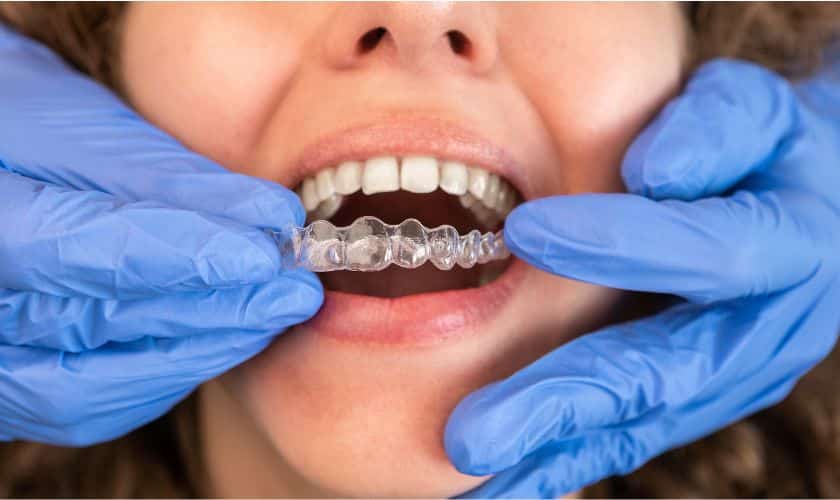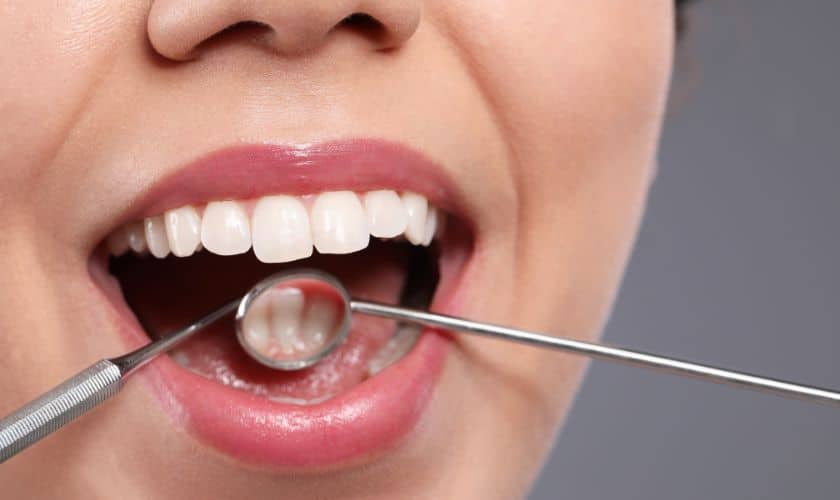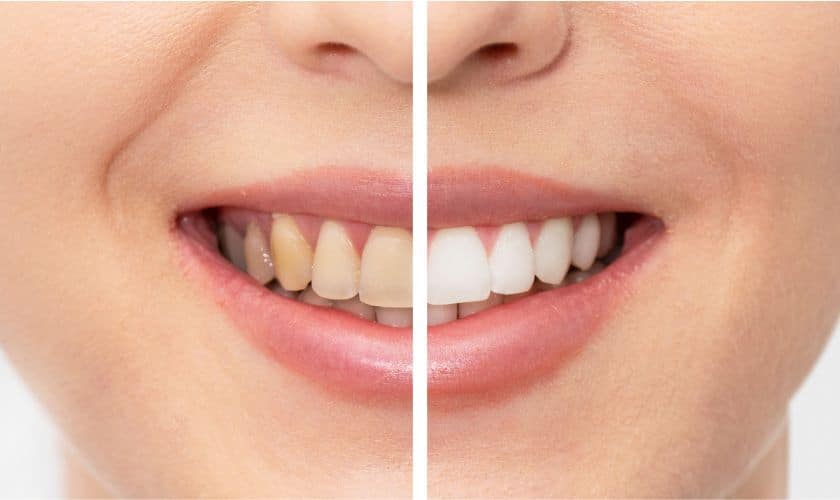Understanding Gum Disease And How To Prevent It
March 26, 2023
Dental Health

Are you tired of dealing with bleeding gums, bad breath, and tooth sensitivity? Have you ever wondered what causes these issues and how to prevent them from happening again? If so, then this blog post is for you! In this article, we’ll dive into everything you need to know about gum disease – from its various stages and symptoms to the best ways to keep your teeth healthy. So sit back, relax, and get ready to learn how to take control of your oral health once and for all!
What is Gum Disease?
Gum disease is a progressive condition that starts with gingivitis or inflammation of the gums. If not treated, it can progress to periodontitis or inflammation of the tissues and bones that support your teeth. Periodontitis can eventually lead to tooth loss. Gum disease is caused by plaque, a sticky film of bacteria that forms on your teeth. Plaque irritates your gums and causes them to become inflamed. If the plaque isn’t removed, it can harden into tartar, which is harder to remove. Tartar can cause your gums to recede and form pockets where more bacteria can grow. The bacteria in plaque and tartar produce toxins that damage your gum tissue and bone.
Types and Causes of Gum Disease
There are two main types of gum disease: gingivitis and periodontitis. Gingivitis is the early stage of gum disease and is characterized by inflammation of the gums. Periodontitis is the more advanced stage of gum disease and is characterized by damage to the tissues and bones that support the teeth.
Gum disease is caused by plaque, a sticky film of bacteria that forms on teeth. Plaque produces toxins that irritate the gums and cause inflammation. If plaque is not removed, it can harden into tartar, which is much harder to remove. Tartar can lead to periodontitis, which damages the tissues and bones that support the teeth.
There are many factors that can increase your risk for gum disease, including smoking, poor oral hygiene, diabetes, hormonal changes, certain medications, genetic predisposition, and stress. You can help prevent gum disease by brushing twice a day with fluoride toothpaste, flossing daily, eating a healthy diet, and visiting your dentist regularly for cleanings and checkups.
Stages of Gum Disease
Gum disease is a progressive condition that starts with gingivitis or inflammation of the gums. If not treated, it can advance to periodontitis or infection of the tissue around the teeth. Periodontitis can lead to tooth loss and other serious health problems.
The good news is that gum disease is preventable and treatable. Understanding the stages of gum disease can help you identify early signs and take action to keep your mouth healthy.
Stage 1: Gingivitis
Gingivitis is an inflammation of the gums that is usually caused by plaque buildup. Plaque is a sticky film of bacteria that forms on teeth when they are not properly cleaned. When plaque isn’t removed, it can harden into tartar or calculus. Tartar can only be removed by a dentist or dental hygienist.
Symptoms of gingivitis include red, swollen, or bleeding gums. Gingivitis is reversible with good oral hygiene habits and regular professional cleanings.
Stage 2: Periodontitis
If left untreated, gingivitis can advance to periodontitis, an infection of the tissues and bones that support your teeth. Plaque and tartar spread below the gum line and cause the breakdown of these tissues and bones. This makes your teeth less stable and can eventually lead to tooth loss.
Symptoms of periodontitis include persistent bad breath, deep pockets between
Signs and Symptoms of Gum Disease
Gum disease, also known as periodontal disease, is a serious infection of the gums that can lead to tooth loss. Gum disease is caused by plaque, a sticky film of bacteria that forms on teeth. Plaque causes the gums to become inflamed and bleed easily. If plaque is not removed, it can harden into tartar, which leads to gum recession and bone loss.
The early stage of gum disease is called gingivitis. Gingivitis can be reversed with good oral hygiene. However, if gingivitis is not treated, it can progress to periodontitis. Periodontitis is a more serious form of gum disease that can destroy the bone around your teeth and lead to tooth loss.
There are several signs and symptoms of gum disease, including:
-Swollen or tender gums
-Gums that bleed easily when brushing or flossing
-Receding gums (gums that pull away from the teeth)
-Persistent bad breath
-Pus between the teeth and gums
-Loose teeth
If you notice any of these signs or symptoms, it’s important to see your dentist right away so that you can begin treatment before the condition worsens.
How to Prevent Gum Disease
Gum disease is an inflammation of the gums that can progress to affect the bone supporting the teeth. It is caused by a buildup of plaque, a sticky film of food and bacteria, on the teeth. If plaque is not removed, it can harden and turn into tartar. Tartar can irritate the gums, making them red, swollen, and more likely to bleed. This can lead to gingivitis, an early form of gum disease.
There are two main ways to prevent gum disease: brushing and flossing regularly and seeing your dentist for regular checkups and cleanings.
Brushing removes plaque from the surfaces of your teeth. Be sure to use a soft-bristled toothbrush and toothpaste that contains fluoride. Fluoride helps protect against cavities and strengthens tooth enamel. Brush your teeth at least twice a day, or after every meal if possible.
Flossing removes plaque from between your teeth, where your toothbrush cannot reach. Use an up-and-down motion with gentle pressure. Floss at least once a day before brushing your teeth.
See your dentist regularly for professional cleanings and checkups. Your dentist can remove tartar that has built up on your teeth, as well as spot any early signs of gum disease so it can be treated before it becomes more serious.
Treatment Options for Gum Disease
Periodontal disease, or gum disease, is a serious oral health condition that can lead to tooth loss and other serious problems. If you have periodontal disease, it is important to get treatment as soon as possible to prevent the condition from getting worse. There are a number of different treatment options available for gum disease, and your dentist will work with you to determine the best course of treatment for your particular case.
One of the most common treatments for gum disease is scaling and root planing. This procedure involves deep cleaning of the teeth and gums to remove plaque and tartar buildup. Scaling and root planing may need to be repeated several times over the course of treatment in order to ensure all of the plaque and tartar is removed.
Another common treatment option for gum disease is antibiotics. Antibiotics can be taken orally or applied directly to the gums. They work by killing the bacteria that cause gum disease. Antibiotics may be used as part of a scaling and root planing procedure, or they may be used on their own if your dentist determines that they are the best course of treatment for your particular case.
In more severe cases of gum disease, surgery may be necessary. Surgery can involve a variety of different procedures, such as flap surgery, bone grafting, or tissue regeneration. These procedures are usually reserved for cases where other treatments have failed or are not possible. Your dentist will
The Bottom Line
Gum disease is a serious health issue that should not be taken lightly. Taking the proper steps to prevent gum disease is essential for maintaining good oral hygiene and overall general health. Following these tips such as brushing twice daily, flossing, using mouthwash regularly, visiting your dentist for regular check-ups, eating a balanced diet, and avoiding smoking will help you keep your gums healthy and strong. With an understanding of gum disease and how to prevent it, you can make sure your teeth stay healthy!
Recent Post

The Gift of Oral Health: Dental Treatments for Moms this Mother’s Day

Maintaining Oral Health While Using Invisalign in Robstown: Tips and Tricks

Unveiling the Truth: Debunking Common Misconceptions About Oral Cancer

Before and After: Real Stories of Teeth Whitening Success in Robstown

